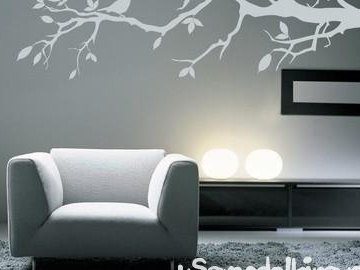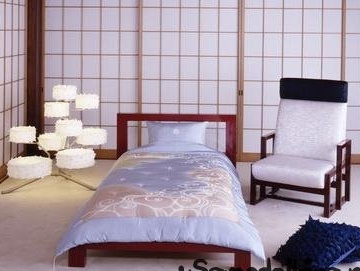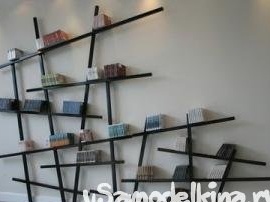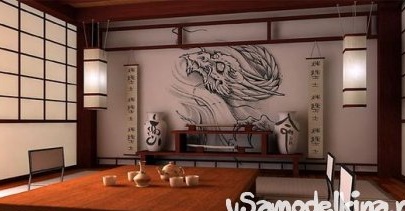
Japanese culture, on its soil, has nurtured a trendy modern trend - minimalism. It consists in the use of straight clean lines, the absence of color diversity, unnecessary objects. Exceptionally a play of light and shadow, the embodiment of naturalness. Nothing superfluous, nothing unnecessary - only space, harmony, rigor and purity. Nothing to do with a monumental empire or artsy baroque.
The basis of the ideology of the Japanese interior is minimalism in things, but the utmost attention to every thing and the relationship between them.

As the Japanese themselves call it, "the beauty of one flower." The decor of the Japanese interior is dull, he does not place accents, being a continuation of the philosophical essence of space. It uses soft colors: gray, beige, shades of wenge, beech, milky white. And at the same time there may be a single, but the brightest drop of red. The sound of the names of the decorative elements of the Japanese interior is as mysterious as the music of Kitaro. Only listen: Tokonoma, Shoji, Tatami, and Futon.

And these melodic words are translated only as “niches”, “sliding panels”, “soft furniture". Well, bouquets of ikebans and tiny bonsai are probably known to everyone. The famous lantern balls hanging on the wall of a kimono, fans, which symbolize prosperity and joy - are indispensable attributes of the traditional Japanese style.
In Japan, they are sensitive to any nature. The roots of this lie in traditional religions: Zen and Shinto.

Shinto is essentially a Japanese version of paganism, and Zen honors contemplation. In the homes of the Japanese very often there are natural stylized ornaments. Perhaps the most common among them is the sakura branches strewn with flowers, symbolizing youth. The next place is bamboo, which means longevity, then butterflies come - a symbol of happiness. As you can see, the Japanese generally gravitate towards all kinds of symbolism.
In general, decorating a room in the style of Japanese minimalism is not as complicated as it seems at first glance, because there are a lot of ideas for this.The main thing is to learn simple rules: it is necessary to avoid lacquer and shiny surfaces, overly massive furniture, too dark shades, blue and dark red tones, ornate wooden carvings.

